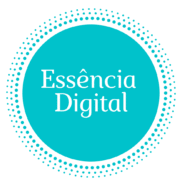On one website, you see a testimonial that says, “Great service!” On another, you read, “Their project management tool saved our team 10 hours a week and helped us hit our quarterly goals a month early.” Which one makes you want to buy?
Testimonials are one of the most powerful forms of social proof, but not all are created equal. Vague, generic praise is forgettable and unconvincing. A truly effective testimonial is a mini-story of transformation. It takes a potential customer from their “before” state of doubt and challenges to their “after” state of success and satisfaction.
This guide provides a strategic framework for moving beyond collecting simple quotes to engineering powerful, story-driven testimonials that build trust, overcome objections, and actively convert prospects into customers.
The Psychology of a Powerful Testimonial: Why Stories Sell
Before diving into the “how,” it’s crucial to understand why story-based testimonials are so persuasive. Unlike a brand’s own marketing claims, which are inherently biased, a customer’s story taps into fundamental psychological triggers:
- It Overcomes Skepticism: A story from a peer who was once in the same position is infinitely more believable than a brand’s own promises. It provides an unbiased, third-party validation of your claims.
- It Creates an Emotional Connection: We are wired to connect with stories. A well-told testimonial allows a prospect to feel the relief, success, and confidence that your customer experienced.
- It Helps Prospects Visualize Success: The most powerful function of a testimonial is allowing potential customers to see themselves in the story. When they can visualize their own transformation, the purchase becomes a logical next step.
The Art of the Ask: The “Golden Questions” Framework
The quality of a testimonial is directly related to the quality of the questions you ask. To get a compelling story, you must guide your customer to tell one. Instead of a vague, “Could you write us a testimonial?” use a structured set of “Golden Questions.”
The best time to ask is at the “peak-happiness moment”—right after you’ve completed a successful project or they’ve given you unsolicited positive feedback.
The Five Golden Questions:
- “What was the biggest challenge you were facing before you hired/bought from us?”
(This establishes the painful “before” state and the problem you solve.) - “What was your main concern or hesitation before choosing us?”
(This powerfully addresses a common objection that other prospects likely have.) - “What has been the specific result or transformation since working with us?”
(This is the “after” state. Encourage them to be as specific and quantifiable as possible.) - “What specific feature/aspect of the product/service did you like most, and why?”
(This highlights a key benefit from the customer’s perspective.) - “Who would you recommend this product/service to, and why?”
(This helps with targeting and reinforces their satisfaction.)
Pro Tip: Make it incredibly easy for them. Offer to hop on a 5-minute call to record their answers, then draft the testimonial for their approval.
From Good to Great: Crafting and Enhancing Testimonials
Once you have the raw material from your customer, you can ethically edit and format it for maximum impact.
- Create a Compelling Headline: Give the testimonial a title that summarizes the single most impressive result. For example, “How Acme Inc. Increased Leads by 30% in 60 Days.”
- Pull Out the “Golden Line”: Find the single most powerful, emotional, or results-oriented sentence and display it in a larger font or as a pull quote.
- Enhance Credibility with Context: A testimonial is far more believable when it’s attached to a real person. Always include:
- The customer’s full name
- Their job title and company
- A high-quality, professional headshot or company logo
- Embrace Video: The Gold Standard of Authenticity: In 2025, a short, 30-60 second video testimonial is the most powerful and trustworthy format. Use tools like VideoAsk or a simple smartphone to make recording easy for your clients.
Strategic Placement: Where to Use Testimonials for Maximum Conversion
Your best testimonials should not be hidden away on a separate “Testimonials” page. They should be deployed strategically at critical decision-making points throughout your customer’s journey.
- On Your Home Page: Feature a rotating carousel of your 3-5 most powerful “hero” testimonials that represent your ideal customer.
- On Service/Product Pages: Place highly relevant testimonials that speak directly to the benefits of that specific offering.
- On Your Pricing Page: Place a testimonial that specifically addresses price hesitation or highlights the return on investment (ROI), right next to your pricing tiers.
- Near Calls to Action (CTAs): A short, reassuring quote right next to a “Buy Now” or “Get Started” button can be the final nudge a user needs.
- Within Your Marketing Materials: Weave testimonials into your email campaigns, social media posts, and sales proposals.
Conclusion: Build a Testimonial Engine
Stop thinking of testimonials as a lucky accident. Start thinking of them as a core part of your marketing strategy. Build a system—an “engine”—that proactively and consistently generates these powerful stories.
Integrate the “ask” into your project wrap-up process. Use automated tools to request feedback after a purchase. Create a central database to store and categorize your testimonials so they are always ready to deploy.
When you do this, you are no longer just selling a product or service. You are showcasing proven results, and you are letting your happiest customers become your most powerful and persuasive sales team.

